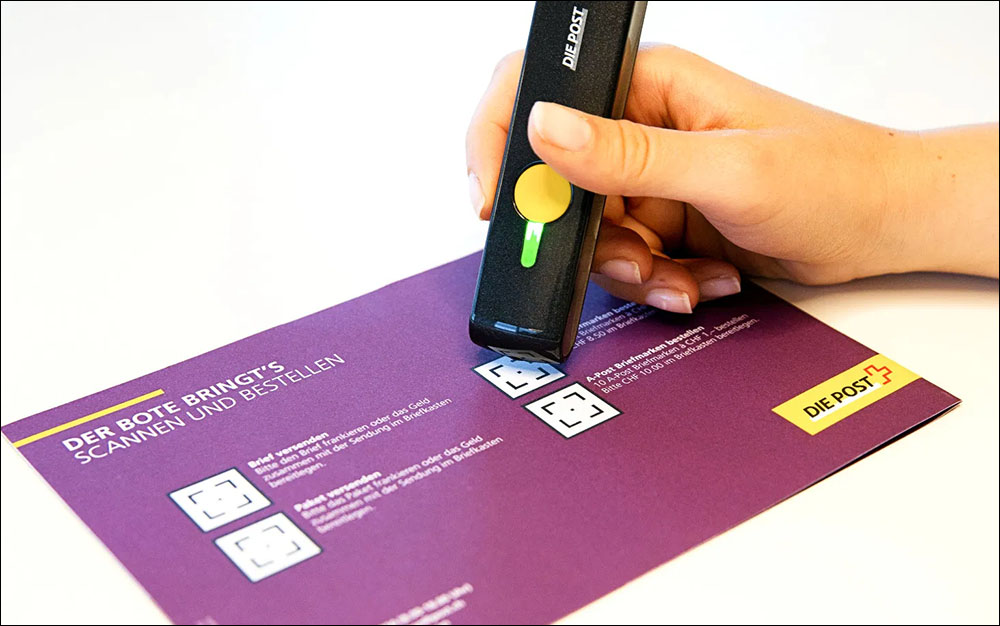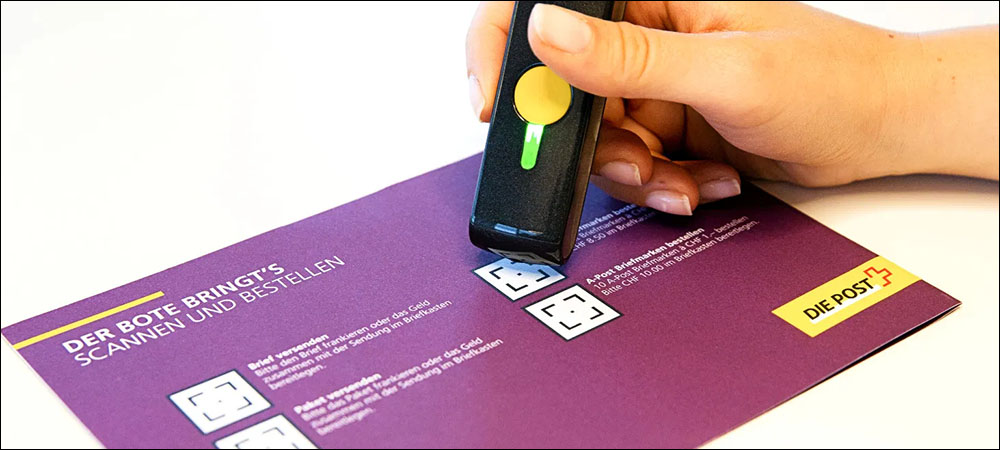Switzerland’s national mail service, Swiss Post, has deployed a LoRaWAN-based shipment-service system so residents in rural areas—those typically underserved by postal offices—can place orders for service from their home via a device that communicates with gateways within the vicinity. The solution, known as SmartButton, was provided by technology company Miromico and includes Semtech‘s LoRa chip to forward data at a distance of up to 30 miles. The system enables orders to be placed without requiring Wi-Fi or cellular connectivity, or the use of a smartphone.
To date, 100,000 SmartButton LoRaWAN devices have been shipped to rural customers. Swiss Post delivers seven million letters daily, along with half a million packages. While urban areas are serviced with post offices, the number of physical sites has decreased as the cost of operating them in villages has become untenable. The nation’s government has passed the Swiss Postal Service Act, which requires universal service for all citizens, including in areas lacking a post office.

Before deploying the new service via LoRaWAN, the agency used a simple plastic request indicator for workers, which citizens would place in their mailbox. This required daily visual inspection, says Thomas Koch, Swiss Post’s head of Internet of Things (IoT). To better serve such citizens, Swiss Post began working with Miromico to create a solution that could be easily deployed by customers and that would automate fulfilment processes for the postal agency.
The SmartButtons developed by Miromico are now in their seventh iteration. The devices allow people at home to order postal services on demand in two steps: scanning a code and pressing a button. For example, a villager might use a SmartButton to order the pickup of a parcel or registered letter. The devices, which can run on batteries for at least 10 years, come with a built-in Semtech LoRaWAN chip that transmits a signal to network provider Swisscom‘s LoRaWAN network, known as LPN.
Miromico began working on the solution with Swiss Post approximately four years ago. The goal was to leverage the IoT to create a device with which customers could place orders for postal supplies and services, in the easiest way possible. One consideration was how to make a system that would be easier to use than a smartphone app, since elderly residents in rural areas are less likely to be phone-savvy—or, in some cases, to even own a smartphone or have Wi-Fi connectivity in their home.
The companies thus sought to create a system that would not require a smartphone, and they looked into numerous wireless technologies, including Wi-Fi and cellular networks. Swiss Post experimented with a small network of around 10 LoRaWAN gateways to determine whether data could be easily captured from remote locations throughout the country. “They came to the conclusion that LoRaWAN had multiple benefits,” says Roelof Koopmans, Semtech’s senior director of strategic alliances solution partners for LoRa and the IoT. Such benefits, he notes, included long-range transmission and a long battery life.
Several pilots were conducted in the Belp, Schattdorf, Landquart and Montreau regions starting in fall 2019, and Swiss Post found that the system was popular across a diverse group of citizens, not just among the elderly. While the company offers an app for service requests, it is also providing the LoRaWAN-based SmartButton to citizens of all ages. The solution leverage Swtizerland’s existing public LoRaWAN network, operated by Swisscom. This nationwide network includes 1,100 gateways and reportedly covers 97 percent of the Swiss population.
Each device is about half the size of a smartphone and comes with a single button and a feedback LED light. Its built-in scanner uses optical identification (OID), which was inspired by one of Miromico’s engineers having watched his child play the digital game Tiptoi with an OID scanning pen to trigger interactive play. The LoRaWAN service provided by Semtech comes with security specifications and bidirectional communication, while Miromico provided a Web-based application for receiving and forwarding the service requests.
The SmartButton devices have been shipped to citizens with a small catalog that comes with printed OID codes linked to residents’ addresses, and each is linked to a particular service, which can include picking up a parcel or a registered letter, ordering stamps, paying bills and withdrawing cash. If citizens wished to have a parcel picked up, they would first use the SmartButton to scan the code dedicated to that service in their catalog. The printed code can be used indefinitely, so users would typically store it in a safe place for reuse. The LED would light up either green or red, indicating whether or not a transmission was completed.
The data is transmitted using AES-128 encryption to ensure the transmission is safe against hackers, Koopmans reports. Swiss Post offers 24-hour service, he says, so if a pickup is ordered before 7:30 AM, a mail carrier will provide the necessary service on that same day. Although the solution was designed for the elderly, he adds, users have appreciated its simplicity, whether or not they are technically savvy or accustomed to conducting business via their phones. Swiss Post reports that the average user age is 35.
“The service is not restricted to remote areas only,” Koch says. “Travel distance to the next postal office is used as indicator. Based on this definition, currently about 300,000 people are entitled to get postal services ordered from home.” Swiss Post allows its customer to choose their preferred technology: an app on their smartphone or the LoRa SmartButton.
With regard to the Swiss Post deployment, Koopmans says, “It’s been a game-changer. Such an easy ordering solution for customers from home is very interesting for a variety of B2C [business-to-consumer] applications,” including ordering pizzas or other meal deliveries, as well as printer cartridges and office supplies. In the future, he adds, the SmartButton technology could be utilized in countries featuring public LoRaWAN networks with nationwide coverage, since those nations would be well suited for similar services.
For business-to-business applications, the system could be used internally to accomplish tasks that previously required phone calls. At a manufacturing site, for example, LoRaWAN devices could be deployed at workstations on the assembly floor, where employees could press a button to request a supply replenishment or some other service. A company would create its own codes linked to specific tasks. In a healthcare environment, meanwhile, nurses or physicians might utilize the technology to request a specific response, such as the ordering of medical supplies. Those in the supply center could then view what was requested, as well as where and by whom.
The Swisscom network covers even mountainous areas in which connectivity might be required, independent of cellular coverage. For instance, the LoRa network is used to send communications during sports events and by mountaineers in the Alps. The SmartButton’s battery will typically last for about ten years, Koopmans reports, because the LoRaWAN standard requires little power to transmit data. The ubiquity of LoRaWAN connectivity, he says, made the solution economically and technically viable.


